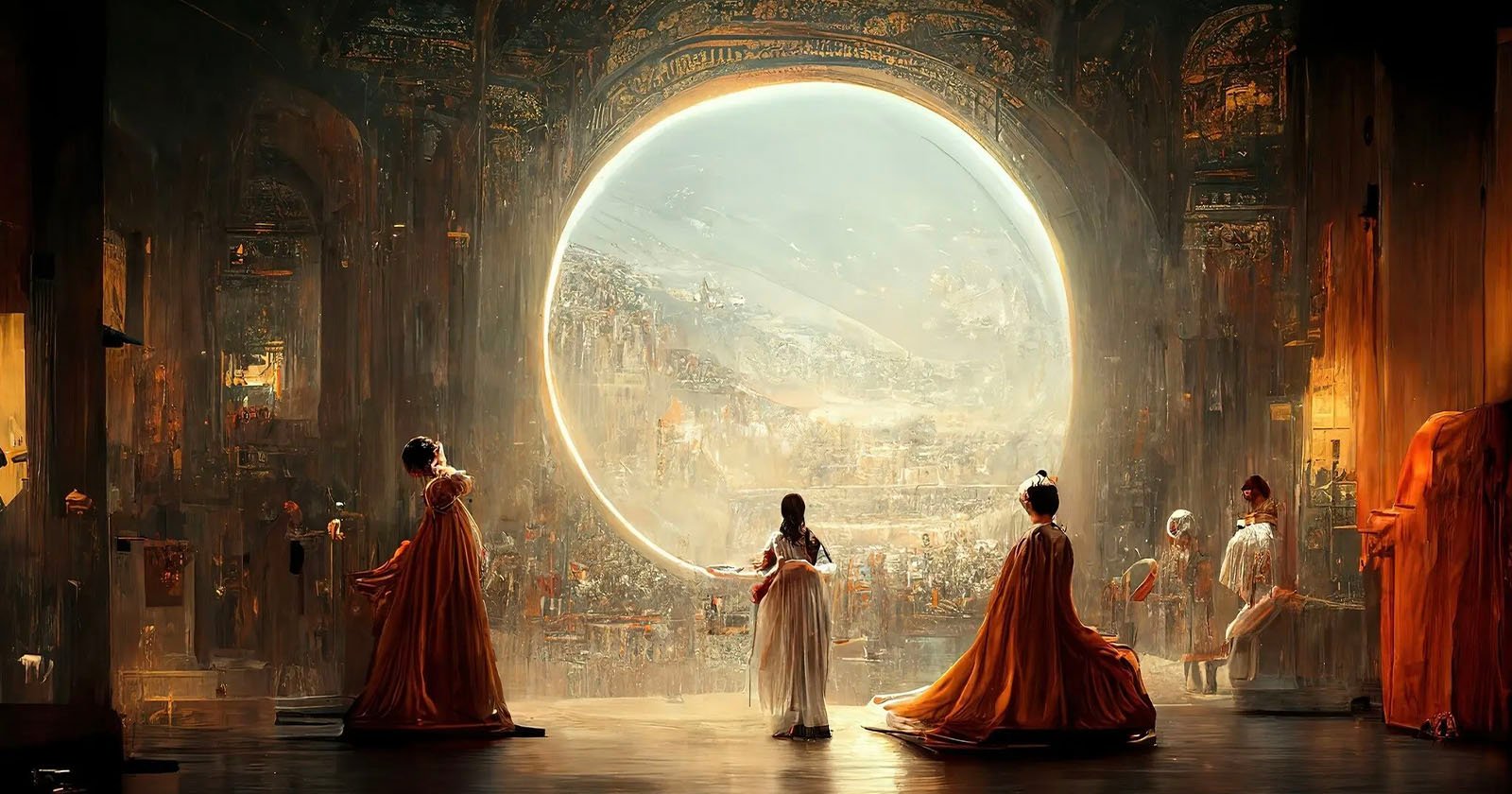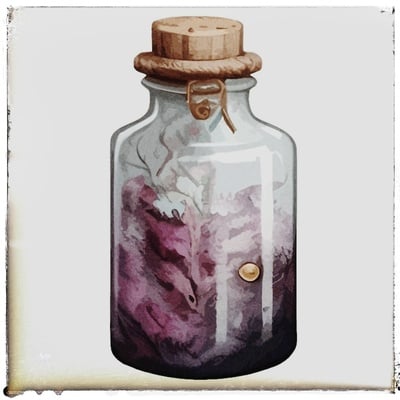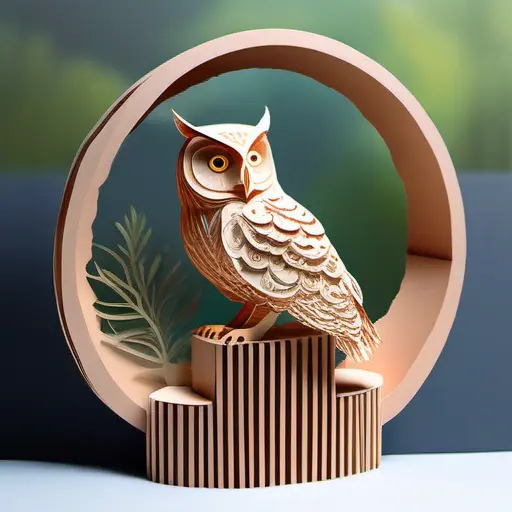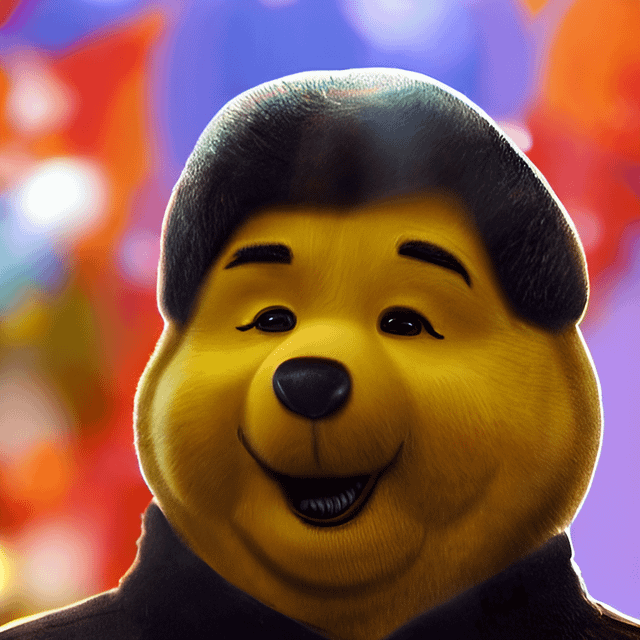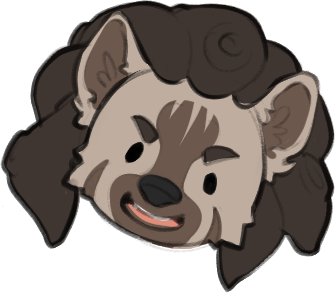An artist who infamously duped an art contest with an AI image is suing the U.S. Copyright Office over its refusal to register the image’s copyright.
In the lawsuit, Jason M. Allen asks a Colorado federal court to reverse the Copyright Office’s decision on his artwork Theatre D’opera Spatialbecause it was an expression of his creativity.
Reuters says the Copyright Office refused to comment on the case while Allen in a statement complains that the office’s decision “put me in a terrible position, with no recourse against others who are blatantly and repeatedly stealing my work.”
You have to be the creator of the work in order to copyright it. He didn’t create the work. If the wind organized the leaves into a beautiful pattern, he couldn’t copyright the leaves either.
Weirdly enough the monkey selfie probably establishes some precedence here, https://en.wikipedia.org/wiki/Monkey_selfie_copyright_dispute
You could copyright a photograph of that leaf pattern though, couldn’t you?
but its just a photocopy of the leaves, not the actual leaves. And to photograph something, you capture it according to your will. What will be the light situation, from which angle, at what focal length,… so many options.
This is getting weird.
If I would generate an image with an AI and then take a photo of it, I could copyright the photo, even if the underlying art is not copyrightable, just like the leaves?
So, in an hypothetical way, I could hold a copyright on the photo of the image, but not on the image itself.
So if someone would find the model, seed, inference engine and prompt they could theoretically redo the image and use it, but until then they would be unable to use my photo for it?
So I would have a copyright to it through obscurity, trying to make it unfeasible to replicate?
This does sound bananas, which - to be fair - is pretty in line with my general impression of copyright laws.
Copyright covers your creative expression.
For example, you draw a superhero named “LemmyMan” and post it online. All of your creative choices are protected. If someone made another LemmyMan with a different caption, they would be violating your copyright because you created everything about LemmyMan, not just the caption in your drawing.
Now suppose you take a photo of Mount Everest. Mount Everest is not your creation, but the choices of lighting, foreground, and perspective are. Someone could not copy your exact photo, but they could take a different photo of Mount Everest making different creative choices.
The same is true of taking a photo of work in the public domain, like the Mona Lisa. If you make no creative addition to the Mona Lisa in your photo, then you have no copyright at all. If you put some creativity into your photo, like some interesting lighting, then those creative elements are protected. But anyone else could still take a photo of the Mona Lisa with different lighting, the subject itself is not under copyright.
Now suppose you tell an AI, “Draw me a superhero”, and it outputs ChatMan. If you make no further creative additions, then you have no copyright at all. But suppose you add a caption to it. Then the caption is your creative expression, so that is protected. But the rest of ChatMan is not, it’s in the public domain just like the Mona Lisa. Anyone else can make their own version of ChatMan that’s exactly the same minus your caption, because the underlying subject is not protected.
It’s human expression that is protected by copyright. Creative height is the bar.
If you’ve done nothing but press a button there’s often no copyright. Photography involves things like selection of motive, framing, etc. If you just photograph a motive which itself doesn’t have copyright, then what you added through your choices is what you may have copyright of. Using another’s scan of a public domain book might be considered fair use, for example (not much extra expression added by just scanning)
Independent creation is indeed a thing in copyright law. Multiple people photographing the same sunset won’t infringe each other’s copyright, at least not if you don’t intentionally try to copy another’s expression, like actively replicating their framing and edits and more.
Doesn’t modern art include works that are simply paint streaks left on canvas from someone quickly swinging a brush with paint on it at a distance?
Why is the phrase used by an AI prompt not considered more effort than that? The former requires no thought, only movement. The latter requires an understanding of language, critical thinking and the ability to envision an end result that isn’t just a paint splatter.
Because in a Jackson Pollock painting, the artist was in complete control of his paintbrush as it swung through the air. Not to mention the choice of brush, the amount of paint, the color, etc. If there is a blue streak in the upper left, it’s because Pollock wanted a blue streak in the upper left.
An AI prompt is more like handing your camera to a passerby in Paris and saying, “Please take a photo of me with the Eiffel Tower in the background”. If your belt is visible in the photo, it’s because the passerby wanted it there. That’s why the passerby, not you, has a copyright over the result.
You can copyright a combination of words, though, and it was his unique combination that created the art. The artist doesn’t copyright the palette, and the shop that sold the pigments holds no ownership over the painting. If the art is created with paint, pixels, or phrase, the final product belongs to the artist, and so should be protected by law for them.
If I use a combination of words to commission an artist to paint a picture, I don’t own the copyright on that picture.
If it’s a commission, you might. Depends on the how the contract is worded.
Okay, let’s see the contract in this AI case that grants this man the copyright.
The contract is set by the company, let’s say Midjourney, which passes ownership to the person who generate the “art.” What needs to be defined is if ai generated art is art? So far, no one seems to have a definite answer. I come down on the side of yes, but there are a lot of others that say no.
Which company passes the ownership to the person in its contract? Midjourney does not, I just looked:
By using the Services, You grant to Midjourney, its affiliates, successors, and assigns a perpetual, worldwide, non-exclusive, sublicensable no-charge, royalty-free, irrevocable copyright license to reproduce, prepare derivative works of, publicly display, publicly perform, sublicense, and distribute the Content You input into the Services, as well as any Assets produced by You through the Service. This license survives termination of this Agreement by any party, for any reason.
https://docs.midjourney.com/docs/terms-of-service
They make it clear that you do not own the copyright on the images you create. Did the artist suing the copyright office use this company?
https://help.midjourney.com/en/articles/8150363-can-i-use-my-images-commercially
reproduce, prepare derivative works of, publicly display, publicly perform, sublicense, and distribute the Content You input into the Services, as well as any Assets produced by You through the Service.
In no way does Midjourney own the image, they only have the ability to “reproduce, prepare derivative works of, publicly display, publicly perform, sublicense, and distribute”.
The article makes that perfectly clear.
It has to be fixed in a tangible medium.
In this case they’re not “fixing” their words and the final art is the created expression. Yet in this case their created expression wasn’t created by them but the program.
In this case their combination is the palette and paint but the program “interpreted” and so fixed it.
For example you can’t copyright a simple and common saying. Nor something factual like a phone book. Likewise you can’t copyright recipes. There has to be a “creative” component by a human. And courts have ruled that AI generated content doesn’t meet that threshold.
That’s not to say that creating the right prompt isn’t an “art” (as in skill and technique) and there is a lot of work in getting them to work right. Likewise there’s a lot of work in compiling recipes, organizing them, etc. but even then only the “design” part of the arrangement of the facts, and excluding the factual content, can be copyrighted.
Using stuff like controlnet to manually influence how images are shaped by the ML engine might count, there’s some great examples here (involving custom Qr codes)
It has to be fixed in a tangible medium.
Hard disks are pretty tangible.
But if they are not as you suggest, does this mean all digital photography is not copyright able?
So many arguments as to why this shouldn’t be subject to copyright seem to fail simple questions of logic.
If the output of ML isn’t copyright able, then the inputs should not be subject to copyright either. The whole system is broken and only serves to enrich the few at the expense of the many. It doesn’t protect the small time artists, only the exceptionally wealthy ones who earn more than the typical worker will make in many lifetimes.
Here’s more if you’d like to read about it.
https://www.copyright.gov/engage/visual-artists/
I remember when the DMCA was introduced and all the various issues arising from what and isn’t copyrightable when it comes to digital vs physical copies, etc.
Again I’d like to recommend Leonard French (Lawful Masse) on YouTube and Twitch for a copyright lawyers breakdown of these kinds of issues.
You cannot copyright a recipe, but you can copyright the product it produces, as evidenced by the wealth of food and drinks that are protected by law from being copied.
Can a person who works with wood and creates something unique from the wood then copyright their design crafted from the wood? What makes it art and not just glue, iron nails, and dead trees? This is what needs to be defined with AI. Right now everyone is so happy to jump on the anti-AI bandwagon that they blind themselves to issues regarding the law by claiming the art is lawless at best and stolen at worst, when in fact it is simply a new tool and a new medium.
Did authors who used typewriters rail against the new word processor? What about the editor that checked for grammar and spelling? Did they try to burn down spell and grammar checks in microsoft word? Is the art any less art if it has been created with a tool that allows for more ease than has been available in the past? Should we boycott the bakers that do not mill their own wheat? Or does the sourdough bread belong to the wild yeast cultures, and so owed recompense for all we have taken from it?
The argument can be made until the universe burns out, or we can accept that art is made by sentient life, and any tool used in the production of it cannot be considered an owner of that art, and if the only sentient lifeform involved in the creation of that art wishes to claim it as their own, then they should have the right to protections for their work.
I’m not Anti AI. I have fun making stuff with it.
But the copyright laws as they are don’t apply. And if they did it would open a can of worms legally.
The recipe can’t be copyrighted. The cake produced can’t be copyrighted. But the packaging or style of a cake with your brand could be trademarked which is a different legal ball of wax entirely
What is the limit to the number of words that can be copyrighted?
For sale,
baby shoes,
never worn.
Can I claim that as my own? Is six words the lowest? Four? Where is the line? What makes it art vs. instruction? If Hemmingway had said those words to his publicist and asked that they be published instead of writing them himself, would he still own them?
And therein lies the rub. When it comes to copyright every infringement case has to be adjudicated by a judge (assuming they have filed a copyright)
I can definitely recommend Leonard French’s (a copyright lawyer) channel Lawful Masses on YouTube and Twitch for a more in-depth breakdown of copyright cases. How it works, the rights that copyright holders have, etc.
you can copyright the product it produces, as evidenced by the wealth of food and drinks that are protected by law from being copied.
No, you can neither copyright a recipe nor the food or drink it produces.
Food and drink is only protected by trademark law. You are free to make a burger that tastes exactly like a Big Mac, you simply can’t call it a Big Mac.
And you can take a photo of some natural rock formations on black and white film stock, but you can’t take Ansel Adam’s photo of natural rock formations on black and white film stock. This is what the artist is suing for. He wants to claim ownership of his work, which I believe falls under copyright law, just like Ansel Adam’s photos.
Ansel Adams has a copyright because of the creative control he had over his photos, such as in lighting, perspective and framing.
Artists generally cannot copyright AI output because they do not have a comparable degree of creative control. Giving prompts to an AI is not sufficient.


Ok, I controlled the lighting, perspective and framing. Can I copyright now?
You can copyright a combination of words, though, and it was his unique combination that created the art
so its literature, then?
The artist doesn’t copyright the palette, and the shop that sold the pigments holds no ownership over the painting.
Sure, the artist doesn’t copyright a palette, or the shop does not hold ownership of pigments. But Companies do patent pigments.
If the art is created with paint, pixels, or phrase, the final product belongs to the artist, and so should be protected by law for them.
If you commission an Art piece, with a detailed description of what it should display. The artist comes back to you with a draft, you tell them to adjust here and there, and you finally after several rounds of drafting got the commissioned art piece. Did you draw it?
Thats what LLMs do and nothing else.
Is the diction of the buyer to the artist in the final paragraph of your argument make the painting a novel? You have you answer.
Yes, companies can copyright specific pigments, but that doesn’t give them ownership over the paintings created by them, only protect for their own IP vis-à-vis the pigments. In the same way, the company that created the LLM may protect their work but hold no ownership on the art it produces.
Who drew the art is of no import when the artist isn’t a sentient lifeform. By your definition, a photographer cannot own a picture because the camera captured it.
Yes, companies can copyright specific pigments
No, you cannot copyright a pigment. Companies can use colors as trademarks, but that just means that competitors can’t use the color in a way that would confuse customers. For example, you can’t start a courier service with vans that are the same color as UPS vans, because that might confuse customers.
You are still free to use that color in ways that are unrelated to UPS, for instance as an eye shadow.
Patents are another matter entirely. You don’t patent the color, but you might be able to patent the media (e.g. a new formula for quick drying paint).
AI Prompt User is complaining people stealing their artwork? Well that’s new.
“”“Artist”“”
“put me in a terrible position, with no recourse against others who are blatantly and repeatedly stealing my work.”
This is an Onion article, right? No one can be this deliberately and hilariously ironically. Fuck AI, and fuck these techbros.
Fun idea: let him copyright his prompt, if he’s so particular about his “creativity.”
boo fucking hoo. If you want to copyright your painting, learn to fucking paint.
It also sucks and is just another shitty AI generated image full of weird nonsense.
Just because he duped a bunch of idiot judges doesn’t mean his art or his arguments have any merit.
I keep saying dude could have just painted it over by now. Is he just stupid. Just paint the picture you already have it.
because it was an expression of his creativity.
yeaaaah no chief, that ain’t it.
This is stupid and I hope he gets his butt handed to him, but:
A federal judge agreed with the Office and contrasted AI images to photography, which also uses a processor to capture images, but it is the human that decides on the elements of the picture, unlike AI imagery where the computer decides on the picture elements.
Journey outside the world of API models (like Midjourney) and you can use imagegen tools where " the human that decides on the elements of the picture"
It can be anything from area prompting (kinda drawing bounding boxes where you want things to go) to controlnet/ipadapter models using some other image as reference, to the “creator” making a sketch and the AI “coloring it in” or fleshing it out, to an artist making a worthy standalone painting and letting the AI “touch it up” or change the style (for instance, to turn a digital painting or a pencil sketch to something resembling a physical painting, watercolor, whatever).
The later is already done in photoshop (just not as well) and is generally not placed into the AI bin.
In other words, this argument isn’t going to hold up, as the line is very blurry. Legislators and courts are going to have to come up with something more solid.
The rule is already human expression in fixed form, of creative height. So you have to demonstrate that you the human made notable contributions to the final output.
I’m sure that an argument can be made that the final output can’t be generated without the human-created prompt. Generative AI doesn’t output images on its own without a seed/prompt, much like a canvas doesn’t paint itself and a camera doesn’t open the shutter on its own.
How old is that judge that they think digital photography is the only possibility to capture an image? 15?
I like it, it’s more interesting to me than most of the boring “original” paintings people try to sell at art shows and online, and almost all of the stuff I’ve seen on people’s walls in their homes. Not another triptych with 4 circles and a triangle, or a lone tree on a grassy hill, or a bowl of fruit and a wine bottle.


